Do you live in a wet climate? Is your lawn constantly wet? Ideally, you should mow your lawn when the grass is reasonably dry. Mowing wet grass is strongly discouraged—not only do you risk slipping and falling or skidding in a riding mower, but you can easily shorten the life of your lawn mower too.
If you cannot wait for your lawn to dry and you have no other option but to mow it wet, you must take every precaution to avoid accidents and potential damage to your lawn and mower. In this article, we will explain everything you need to know about mowing wet grass. We will talk about the risks involved and the special rules you need to follow should you decide to go ahead with it.
Can you mow wet grass?
Mowing a wet lawn is never a good idea. But, there are some instances where you have to cut the grass. For example, if it has been raining non-stop and your lawn is overgrown or if you urgently need to manicure your garden for an upcoming event. Either way, mowing wet grass has more downsides than upsides.
Let us look at some of the reasons why you should not mow a wet lawn.
Slip and Fall Risk
It is easy to downplay the hidden dangers of wet grass but there is a great risk of slipping and falling as you ride or push your mower. The danger is even greater if your lawn is sloppy. We particularly recommend against using a riding lawn mower on a wet, sloppy lawn due to the increased risk of tipping over.
Damaging Your Mower
Wet, sticky, and clumpy grass will clog up your mower’s deck and blades. A clogged mower needs to work harder to cut grass and this can put a lot of strain on the engine thereby shortening your mower’s lifespan.
You also run the risk of damaging your engine when the moisture mixes with excess fuel. Other than this, you might have to clean out the deck as you go along, which only adds to the time spent out on the lawn.
Potential Permanent Damage
Wet grass blades usually bend over due to the weight of the moisture. As you mow, chances are good that you will miss these bent blades, resulting in an irregular and patchy mowing job.
Mowing wet grass can also hurt the grass roots leading to permanent damage to your once beautiful lawn. Potential fungus and mold growth is another way that cutting wet grass can damage your lawn.
Additional Work
Cutting wet grass not only poses danger to your safety, but it can also be inconveniencing, as you would have extra cleaning work to do after mowing. The chlorophyll on wet cut grass can leave tough stains on your mower.
The wet, clumped up and possibly muddy grass is not only messy but will likely take elbow grease to scrape out and hose down. If this doesn’t sound like something you would want to spend your time doing, then you might want to hold off mowing until the lawn is dry enough.
Tips for Mowing Wet Grass
As you can see, the downsides of mowing a wet lawn are far greater than the benefits. But, if you absolutely cannot wait for the lawn to dry, there are a couple of important things you need to do to minimize risk to yourself, the mower, and your lawn.
1. Protect your engine with a fuel stabilizer
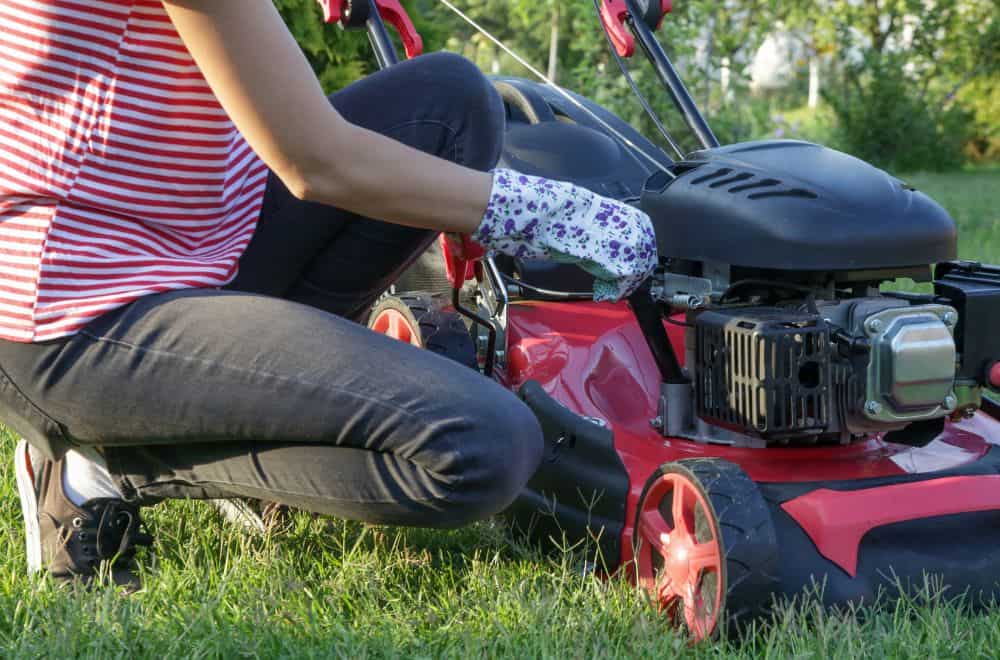
If you are using a gas-powered lawn mower on wet grass, moisture can mix with the fuel and possibly damage the engine.
To protect your engine, fill the tank with just the amount of fuel you need for a single mowing session. It is also a good idea to add a stabilizer, which gives a protective layer to the fuel and keeps moisture away.
2. Keep mower blades sharp
Now is a good time to sharpen those mower blades if you haven’t done so in a while. Mowing wet grass already makes your mower work harder than usual but you can ease this burden by ensuring that the blades are sharp enough to cut through the grass.
Other than this, blunt blades will also tear your grass, which can result in a shaggy cut or worse, cause permanent lawn damage. Sharpening your mower blades is not difficult and you can quickly teach yourself how to do it.
3. Rise the mower deck and use side-discharge
When mowing a wet lawn, aim to trim just the tips of the grass blades as opposed to shaving the lawn itself. Ideally, only a third of the grass blades should be cut. To do this rise the mower deck several inches above the ground. This will prevent muddy grass clipping from sticking to the undercarriage and slowing down the mower.
In addition to this, you should set your mower to the side-discharge setting. Mulching or bagging is ideal but it is not the best option when dealing with wet grass. Mulching using wet grass clippings can suffocate the grass underneath while bagging moist grass will clog up the mower. Side discharge will require you to rake afterward but it is your best option for avoiding damage to your mower and protecting your grass.
4. Be mindful of your type of mower
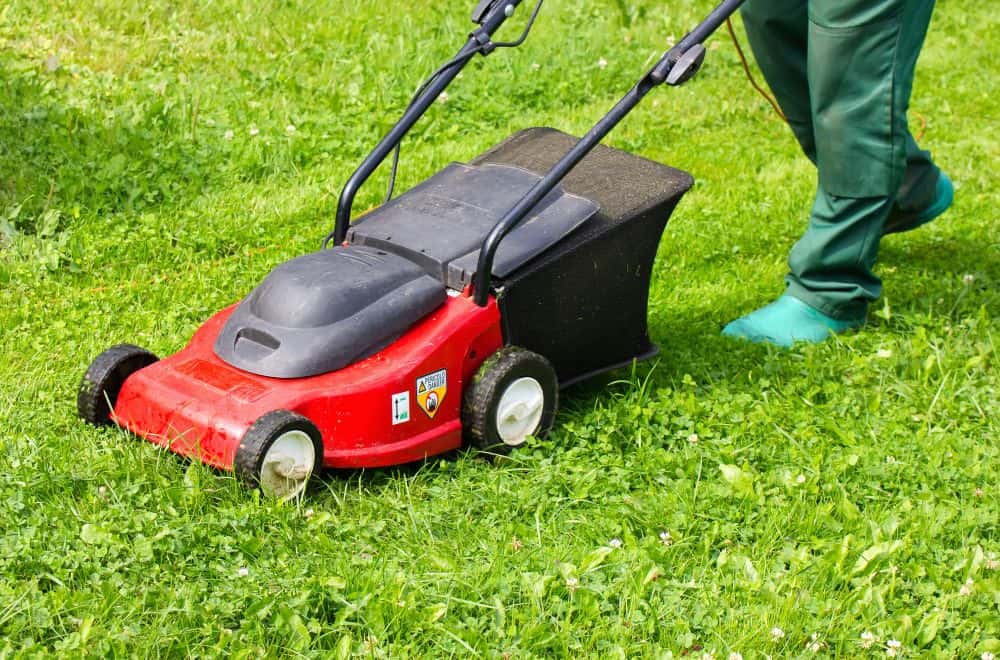
Riding mowers such as zero turn or lawn tractors are especially unsafe to use on wet grass. These mowers can easily lose traction on slippery terrain and tip over, resulting in a potentially serious accident.
If your lawn is hilly, we really do not recommend using a riding mower to cut wet grass due to the high risk involved. Even if your riding mower has safety features such as a roll bar and safety belts, you should consider using another type of mower or hold off mowing until the grass is dry.
A push mower is a better alternative and works well on flat terrains. Your best option is a gas-powered self-propelled push mower. A self-propelled mower can take the burden out of pushing a mower in wet grass, as all you have to do is steer it in your preferred direction.
Avoid using an electric push mower to mow wet grass. There is a real risk of electrocution and the moisture can cause the mower to short circuit in the middle of mowing, which is obviously a big inconvenience.
5. Mow slowly to avoid grass damage
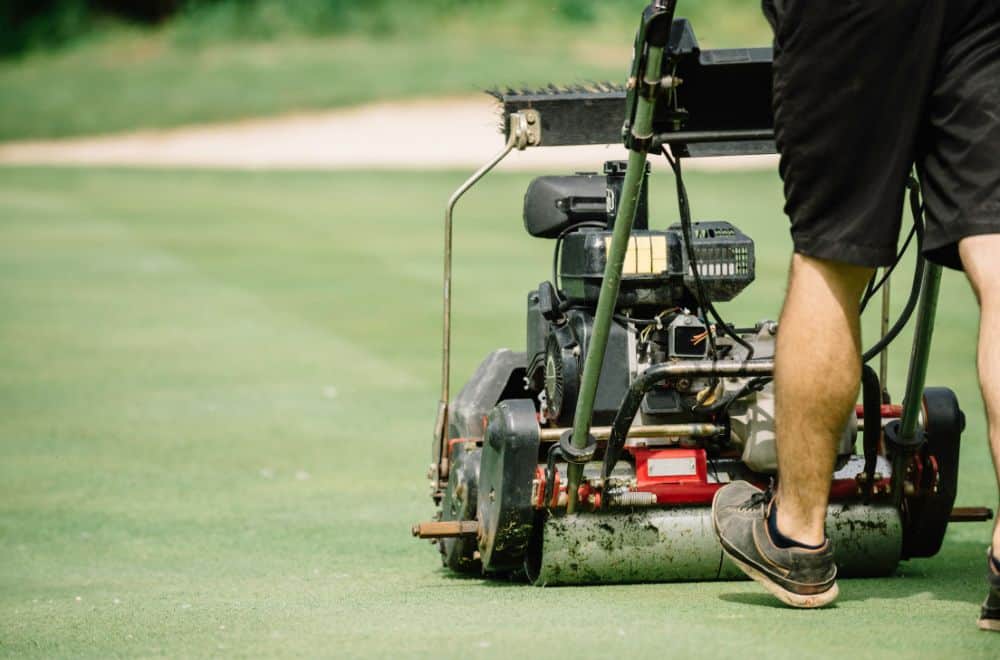
When cutting wet grass, it is safer to be slow but sure. This will not only reduce the risk of sliding and falling; a slower pace will keep your mower from working too hard to cut the wet grass. A slow but steady motion also ensures that you do not tear the grass, which can result in an uneven cut or worse still, damage to the grass roots.
We also recommend steering your mower in different directions. Instead of mowing in a unidirectional pattern like you normally would with dry grass, try to mow horizontally and vertically to cut the bent wet grass blades.
6. Keep the mower’s underside clean
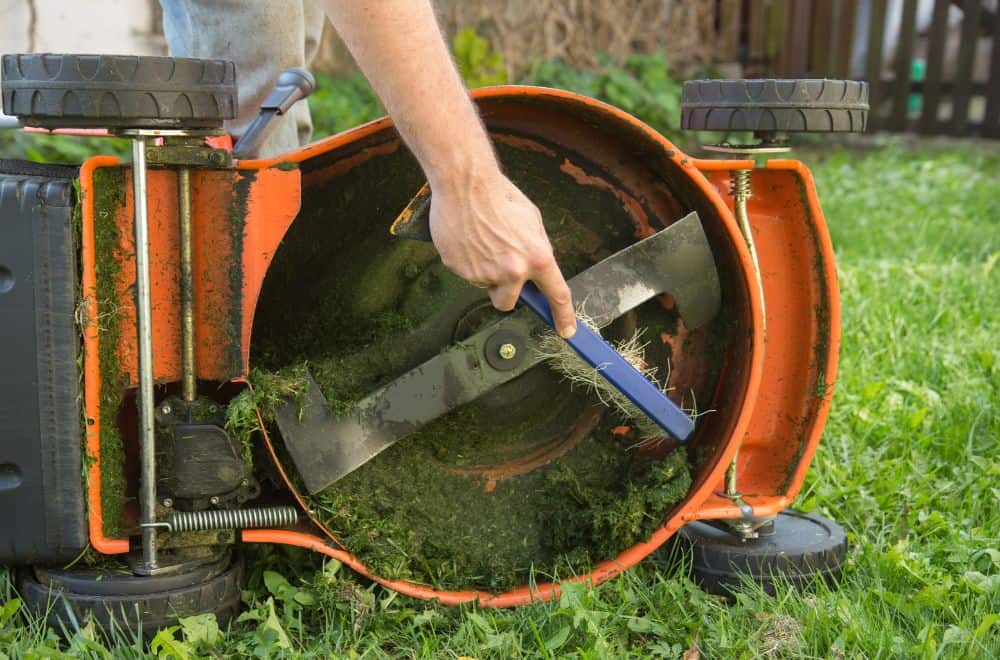
Freshly cut grass tends to easily stick to the underside of the mower deck. Make sure that you clean your mower as soon as you finish using it to keep stubborn stains and potential fungus and mold from damaging your machine.
Thoroughly hose down the wet grass clippings and scrape off any that is stuck to the deck and wheels. Afterward, wipe the mower with a dry, clean cloth and store it according to the manufacturer’s recommendations.
One trick that will help minimize the stains from wet grass clippings is applying a silicone lubricant to the underside of the deck. This will keep the grass from sticking to the mower and makes it easier to clean.
Summary
Mowing wet grass is never a good idea but sometimes it might be necessary. That said, you should never attempt to cut grass when it is raining outside or when the grass is overly saturated.
Take extra precaution when mowing a sloppy lawn as the mower could skid out of control and cause catastrophic damage. Also, no matter how badly you may need to mow your lawn, you really should hold off if the only type of mower you have at hand is an electric one for obvious reasons.
If you live in a rainy climate, try mowing often when the weather is pleasant. This way, you will avoid finding yourself with an overgrown lawn that is too soggy to mow. Keep these tips in mind and your mower (and you as well) will be in tip-top form at each mowing session.
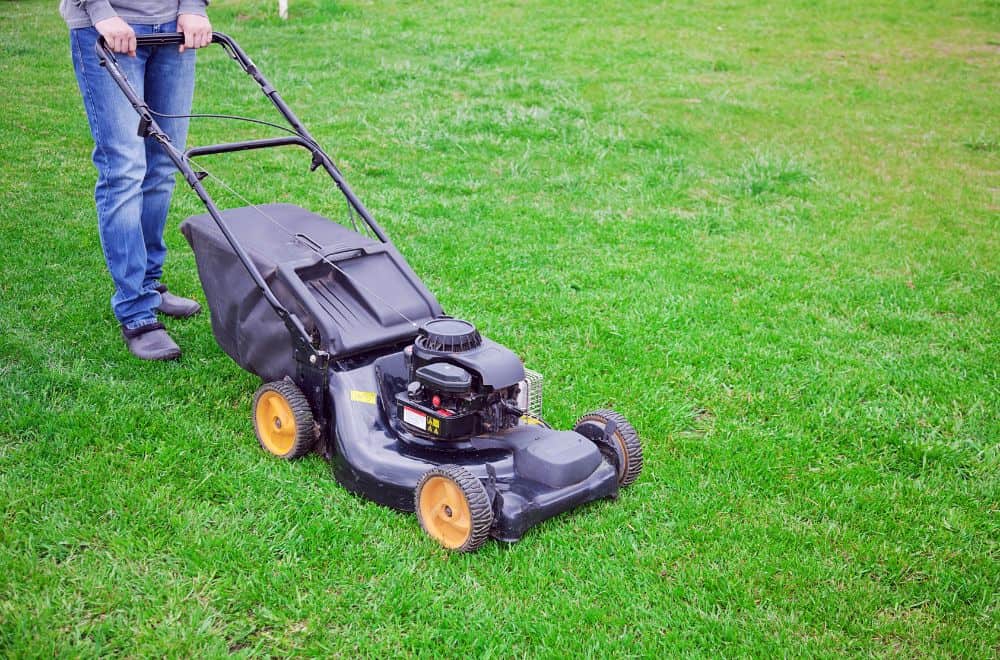
Leave a comment